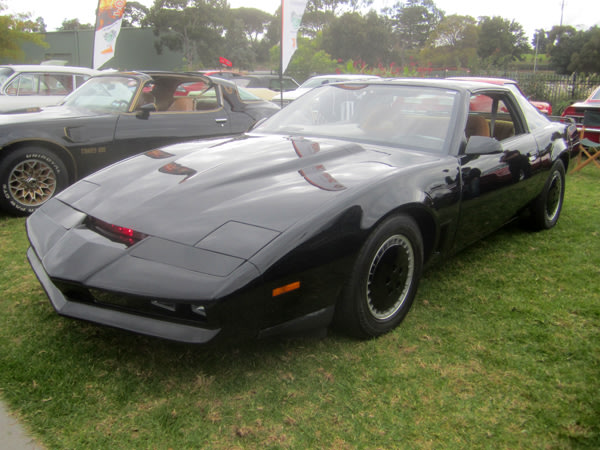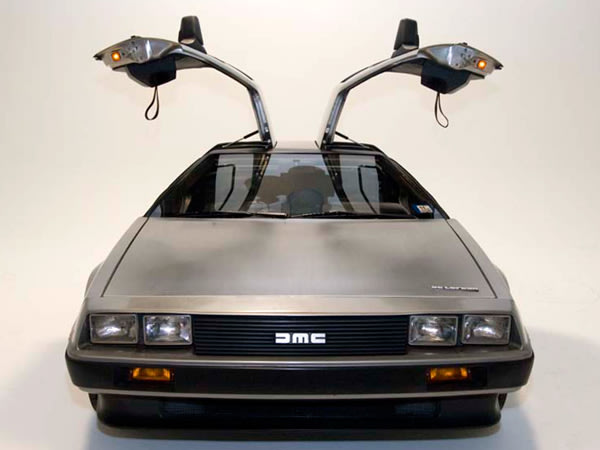
1978 Ford Mustang King Cobra
Ford's legendary performance car hit its nadir with the downsized Pinto-based Mustangs of 1974–1978, called Mustang II. Although this generation of Mustang came with a V-8, it was a 302 cid V-8 with a mere 139 hp. Yes, you read that right. Second-gen Mustangs pumped out just 19 more hp than you'd get from the 1.6-liter four-cylinder in today's Ford Fiesta.
But that's not the most embarrassing part of the Mustang II. That would belong to the rare one-year-only 1978 Mustang King Cobra. The Cobra name should have been kept off junk like this, but Ford had already resurrected the "Cobra" name as a sticker and spoiler package for 1976. The '78 King Cobra got some really special performance enhancements, such as a hood snake decal, even more stripes, and 13-inch "Lacy" aluminum wheels. You could buy the King Cobra in black with gold trim—an obvious attempt to lure would-be Trans Am buyers. But with a deficit of 81 hp compared with the top Trans Am, the Ford wasn't much of a threat. Thankfully the all-new 1979 Fox Mustang would kill the King Cobra and mark the return for Ford performance.

1974 Pontiac GTO
The '64 Pontiac GTO is widely regarded as the first muscle car. The performance formula was simple: Drop a big 325-hp 389-cid V-8 (348 hp with Tri-Power carburetion) into a relatively small Tempest chassis and you've got a seriously quick car. The GTO went from option package to becoming its own model, and horsepower officially peaked with the 370-hp Ram Air IV V-8. (Unofficially, the big 455 High-Output (HO) of the early 1970s reportedly reached the 400-hp plateau.)
The GTO name became an option package for the Le Mans in 1973 with the top motor, a detuned 455 V-8, making a mere 250 hp. In 1974 the devastation hit a new low. Pontiac made the GTO tag an option on the Ventura, the brand's lame version of the Nova. Yuck. Under the hood was a 350 cid V-8 rated at just 200 hp. And aside from the shaker hood scoop and GTO lettering, it looked just like your grandmother's car.
The move flopped, and Pontiac pulled the GTO nameplate. We wouldn't see it again until the brief 2004–2006 revival.

1977 Chevy Monza Mirage
Chevy's downsized Monza coupe of 1975–1980 was based on the bones of the Vega. It was meant to be a smaller, sporty, and less-expensive alternative to the Camaro. And like just about every other "sporty" American coupe of this era, it had little performance under the hood.
In 1977 Michigan Automotive Techniques Corp offered a solution—at least a visual one. The company developed a package that included wide-body fender flares, spoilers, and striping that turned an ordinary Monza into the Monza Mirage. The Mirage looked cool, no doubt about it, aping the style of the popular IMSA Camel GT racing Monzas at the time. But performance? An anemic four-cylinder was standard. If you wanted a V-8, the only one available was the 5.0-liter you could order in any Monza. Talk about a dog—it made just 145 hp. And if you lived in California, that V-8 cranked out 135 hp—even less than the Mustang King Cobra.

1976–1980 Plymouth Volare Road Runner
Few cars from the muscle-car explosion of the 1960s carried a stronger performance rep than the Road Runner. The 440 Six Pack and Hemi cars dominated on the street and strip. And the Road Runner–based Plymouth Superbird became a legend on Nascar tracks in 1970 and a rare (and valuable) sight on the street today.
But in the mid-70s, Plymouth affixed the Road Runner name to the lowly Volare midsize coupe. The standard engine was a wheezy 318-cid V-8 with just 160 hp. An optional 175–195 hp (depending on the year) 360 cid V-8 made the Volare Road Runner a bit quicker, but it still was no match for the 1960s and early 1970s cars. Worse, the Plymouth Volare and its Dodge Aspen brethren were prone to rust (as seen here), prompting a major recall in 1977.

1982 Pontiac Trans Am
The third-generation Pontiac Firebird was a stunner. Its sleek lines made the old 1970–1981 second-gen 'Bird look like a relic. The shape set a new standard for aerodynamics. The bodywork, especially in Trans Am guise, was tasteful and clean. When it debuted, everyone forgot about the poorly performing 1980–1981 Turbo Trans Ams. The '82 even got a starring role in Knight Rider as KITT (Knight Industries Two Thousand), seen here.
Well, a fresh redesign with cutting-edge aero doesn't necessarily equate to performance under the hood. In fact, for 1982 the Firebird's standard engine was a 2.5-liter 90-hp four-cylinder. That's right, a four-cylinder engine in a Firebird. Yes, there was a V-8 option. But if you selected the four-speed manual, that 5.0-liter Chevrolet-sourced V-8 pumped out just 145 horses. The "Cross-Fire Injected" 5.0-liter V-8 was available with an automatic only, and though it was torque-rich, this motor didn't produce more than 165 hp.
The bright spot was just two short years away. By 1984, a 190-hp 5.0-liter HO motor replaced that Cross-Fire Injected engine.

1980–1983 Dodge Mirada CMX
In the 1970s the personal coupe was hot. These large two-door coupes were packed with comfort and a big V-8 under the hood, but because they were based on a full-size chassis, there was plenty of room to stretch out. And they were quick.
By the early 1980s, demand for big coupes was waning. But Dodge had one more up its sleeve—the Mirada. Although it was nominally the successor to the Charger, the Mirada shared nearly nothing with that legendary ride.
The Mirada was underpinned with the same chassis as the Diplomat sedan—the cars cops used at the time. But there wasn't much cop-spec goodness under the Mirada. The CMX top model promised performance, especially when you saw those larger 205/75R15 radial tires. But in reality the 360-cid V-8 under the CMX's long hood made just 185 hp. The Mirada died in 1983 as sales of all Chrysler vehicles were in freefall, making room for Lee Iacocca's more fuel-efficient and quicker turbocharged front-drive K-cars.

1980–1985 Chevy Citation X-11
GM finally introduced its first downsized front-wheel-drive cars in the 1980 model year with the X-body cars, which included such legends as the Oldsmobile Omega, Buick Skylark, Pontiac Phoenix, and the Chevy Citation. The Citation got the X-11 performance package, which turned out to be more than just an average sticker and spoiler package. It came with an HO 2.8-liter V-6 rated at 135 hp, wider 215/60R14 tires, and a "sport" suspension system. That wasn't too bad for a small car in the early '80s. And to our eye, the X-11s actually looked pretty cool too.
The problem was, even though the ideas behind the sporty version of the Citation were okay, the Citation itself was not. The car gained a wide reputation as a poorly built pile of junk needing numerous factory recalls. Perhaps worst of all, Citations had a tendency to lock their rear wheels under hard braking, causing the cars to spin. Yikes.

1978 AMC Gremlin GT
By 1978 AMC's funky Gremlin had been around for eight full seasons. The rear-drive hatchback had lost its top motor—a lame 120-hp 304-cid V-8—a year earlier. So, to boost Gremlin sales in its final year, AMC developed the GT.
Here was a pokey little Gremlin made up to look like real performance machine. It had fat fender flares, spoilers, body-colored bumpers, and wide 14-inch wheels with outline white letter tires. On the inside, GT's had an aluminum-look dash and more. But under the hood of this macho Gremlin, you'd find the same torque-rich but horsepower-deficient 4.2-liter inline six-cylinder used in Jeep CJ-7s. Not exactly perfect for a performance car.

1980–1981 DeLorean DMC-12
Because of the DeLorean's iconic starring role in Back to Future more than a quarter-century ago, it's still impossible to separate the image of the DMC-12 from the reality of its performance. But despite its pop culture superstardom and enduring appeal, the DeLorean was definitely not a quick car.
Sure, John Z. Delorean's American supercar was penned by famed Italian designer Giugiaro and wore flashy stainless-steel body panels and sexy gullwing doors. It's chassis showed promise too, as Delorean contracted Colin Chapman of Lotus to develop the suspension. But peer beneath the engine cover and you'll find the joint-venture Peugeot–Renault–Volvo 2.8-liter V-6 producing just 130 hp. Pretty anemic for a car that looked like the future and cost $25,000 at the time. In fact, in a 1981 Car and Driver comparison test, the Delorean was the slowest of the five sports cars tested.
source